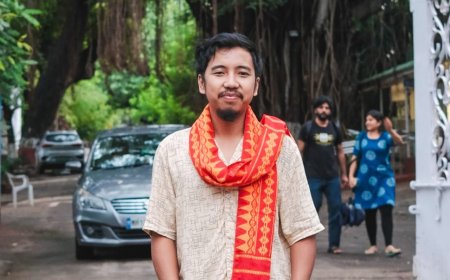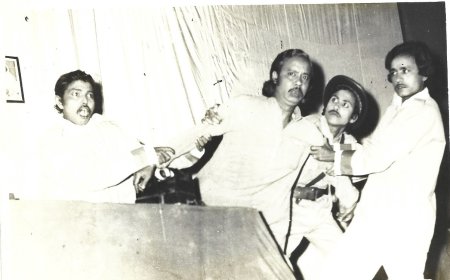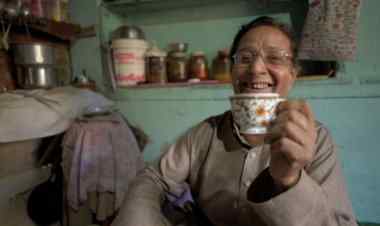NONA JOLER KABBO –A STRIKING FILM FROM BANGLADESH
Rezwan Shahriar Sumit, a brilliant Bangladeshi filmmaker, was interviewed by Shoma A. Chatterji
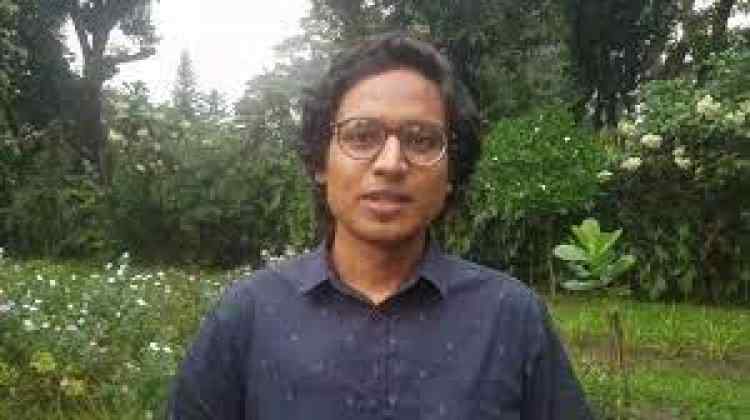
Rezwan Shahriar Sumit is a filmmaker from Bangladesh. He has recently debuted with his first full-length feature in Bengali called Nona Joler Kabbo (Salt in Our Waters). It is about Rudra, a young sculptor who relocates to coastal Bangladesh to practice his art, but in doing so upturns the local community’s age-old customs and taboos. The young man has an illustrious background. He studied at the Graduate Film Program of NYU Tisch School of the Arts. Academic films are treated seriously at our school. He feels that academic films are treated seriously in the school. He had had friends whose student films were invited to Sundance, Berlin and Venice. He feels that the most important lesson the school taught them “was to respect and nurture our own voices.” Success to him now carries a new meaning. Festival nominations, distribution, and sales are crucial for your career, but being able to tell meaningful stories like "The Salt in Our Waters" means the world to me right now.” The film has already been screened at many film festivals across the world. At least thirty other special events, including the COP26 United Nations Climate Conference in Glasgow, also screened the film.
Why the name Nona Joler Kabbo? It is a beautiful name.
Thank you. "Kabbo" means poetry. A good poem provokes thought. It causes a variety of emotional responses, including melancholy, joy, anger, love, empathy, etc. It is usually oblique. It uses figurative language to stir up vivid imagery in the reader's mind. I have always wanted to make a film that would have these qualities. In "Nonajoler Kabbo", Mother Nature plays a very central role, and she has her own rhyme and rhythm. The hilsha fishers often adapt their way of life to match with Mother Nature's cadence and cycles. When you film their interactions, edit the footage together, the montage that results usually screams poetry.
Has it been inspired by a literary source or is it your own story written by you?
Nonajoler Kabbo is an original screenplay. It is based on my observations from visits to the hilsha fishing communities that are located across the Patuakhali shoreline. It just so happened that I made my first trip there a few months after a terrible cyclone. The damage and losses were listed as statistics on each and every newspaper and TV channel in Bangladesh. However, the human stories that lie behind these statistics were never highlighted. At least there was nothing that would begin a dialogue. So this was the first time I got to meet the fisher folks and see them for who they really are. Yes, their homes had been destroyed, but they had already started the process of rebuilding them. Seeing that was incredibly inspiring. I was eager to tell my friends and family back in Dhaka about this experience.
What is your directorial statement on the film?
In my view, the fishing island of this film is a microcosm of Bangladesh, in unity as well as in division. It would take courage for a sculptor to come out of his or her studio environment and step into a secluded, rural pocket to practice figurative art. On the other hand, I don't believe the fisherfolk would ever harm an artist unless they were provoked on purpose by a manipulative leader like the Chairman. Conflict often results from a lack of communication between the two groups. While my film is by no means a solution to any of their issues, I hope it will at the very least act as a conversation starter. I therefore welcome the chance to show this film in the isolated chars of Bangladesh. So far, we've had five opportunities, and each one resulted in a very positive experience.
The film seems to have been shot entirely on location. Where, when and for how long?
The film was indeed shot entirely on location. We shot it in a tiny fishing village nearly tucked into the coastlines of Gangamatir Char, Patuakhali. We built our sets right at the edge of the village so as not to disturb the daily activities of the fishers. That being said, we also had to be able to stay immersed and be a part of the fabric in a way that feels organic. The shoot was therefore a delicate balancing act. A few prospective investors had requested that I film the interior scenes in a Dhaka soundstage. I persisted in putting off that idea while looking for the right kind of investor who would understand the artistic intent behind this movie. When we were filming, we even had to face the difficult Bengali monsoon, we learnt to take one day at a time.
How did you and your entire team, cast and crew cope with the inclement weather conditions?
We always had a plan B ready. For example, for every exterior scene, there was an interior scene that we could shoot in case it started to rain. The longest downpour we had to wait out lasted for four to five hours. We did not lose a single day of shooting. This is pretty much a miracle in my opinion. There were of course other natural elements that gave us difficulties. For instance, one day four of the shoot, our brand new remote follow focus system malfunctioned. That system was purchased by our rental company from New York just before our shoot. It was carried by hand to Gangamatir Char and was meant to be a crucial component of our fast-paced, handheld cinematography. Later, we found that too much sand had clogged the system's wiring. For the next seven days, until a replacement came from Singapore, we pulled focus with the good old follow focus whip. Additionally, we had to deal with the occasionally erratic tide cycle. During high tide, some shooting locations would become inaccessible, while other spots required a precisely timed exit strategy in order to avoid getting stuck inside the forest. Let's just say that each and every day we spent in Gangamatir Char was eventful.
How long did it take to complete the film from concept to censor board?
The entire process, from concept to censor board, took us seven years. It sounds like a crazy timetable, now that I think about it. Then again, it was not the easiest first feature to make. Director Spike Lee was the first person who gave me a grant for this project, not without a warning. “You are going to shoot a first feature, in Bangladesh, during monsoon, on boats? May Allah be with you, my boy! Allahu Akbar!” Maybe I laughed that day, but he was right. This project – from development to post-production – put me to the test in ways I never imagined.
How did you choose and prepare your acting cast? Script-reading sessions, rehearsals, workshops, all of these?
I kind of knew from the get go that a substantial percentage of the cast would be made up of non-professional actors. Because of this, whenever I visited Patuakhali for research, I used to look out for unique characters. I auditioned every part that required delivery of dialogue. However, once selection was confirmed, I did not rehearse much with them. From previous experiences, I knew over-rehearsing can mypixelstory.com sumit@mypixelstory.com drain the energy out of “non-actors”. Furthermore, you want to save a few surprises for the actual shooting day. The fisherfolks did not require any physical training because they were essentially portraying themselves in the film. That doesn't apply to the 5–6 professional actors that appear in the film. They had to put forth a lot of effort to blend in. The most notable transformation likely occurred with Tuni, played by Tasnova Tamanna, who worked extremely hard to bring it about.
What brief did you give to your music director?
I'm glad you asked that question. Arnob, a renowned indie composer from Bangladesh, created the film's minimalist score. He brought some fresh ideas to the table. I guess the choice to compose the score only with wind instruments was by far the most significant. The flute-based score is a fitting tribute to the constant flow of wind that undulates the hearts and minds of the hilsha fisher folks. The flutes were performed by artists based in Santiniketan, India. 10. Please list the festivals the film has been screened in and awards, if any. Please find below a list of festivals where the film has screened. At least thirty other special events, including the COP26 United Nations Climate Conference in Glasgow, also screened the film.
As director, do you permit your actors to improvise on the shoot or are you very strict about your direction?
I invest a lot of time into a project's research and development stage. The experiences I gain throughout this phase become the basis for the screenplay. However, on the day we shoot, the screenplay serves only as a guiding tool to keep the entire crew operating at the same frequency. I enjoy making changes right up until the last second. Although aspiring directors reading this must keep in mind that last minute changes can often throw even the most experienced actors off balance. Keeping actors informed of the changes is essential, as is, of course, getting their feedback.
How do you define cinema in your own terms?
The fishing village where we shot our film is no longer there. The houses were consumed by the rising sea water. Even our sets are gone. Nonajoler Kabbo is the only cinematic record of life in that village. Last year, when we went back to Gangamatir Char and screened the film, the displaced families got quite emotional. They got to revisit a time and place that are now lost forever. Just watching them was so incredibly moving. I've never had a movie going experience quite like that. I began to understand the significance of cinema in the grand scheme of things.
Your brief description of contemporary cinema in Bangladesh in your own opinion - mainstream, off mainstream, documentary, etc?
Bangladeshi cinema is on the rise. Films such as Rehana Maryam Noor, Made In Bangladesh, and Day After are representing Bangladesh internationally. Our projects are being recommended for prestigious funds, including CNC Aide aux cinémas du monde, World Cinema Fund and Torino Film Lab. A Hollywood production company will turn the short film Moshari from Bangladesh into a feature. Documentaries are gathering momentum, slowly yet steadily. Even I am working on a documentary feature right now, it is set in the same universe as Nonajoler Kabbo. The title is Tide Is Rising. I feel like now is the time for our government to play catch-up, reform antiquated legislation, and help us cultivate an environment that fosters creativity.
Anything else you may want to add.
I am very grateful for the chance to share my story. For those of you who are interested, you can still watch Nonajoler Kabbo (The Salt in Our Waters) on MUBI India.
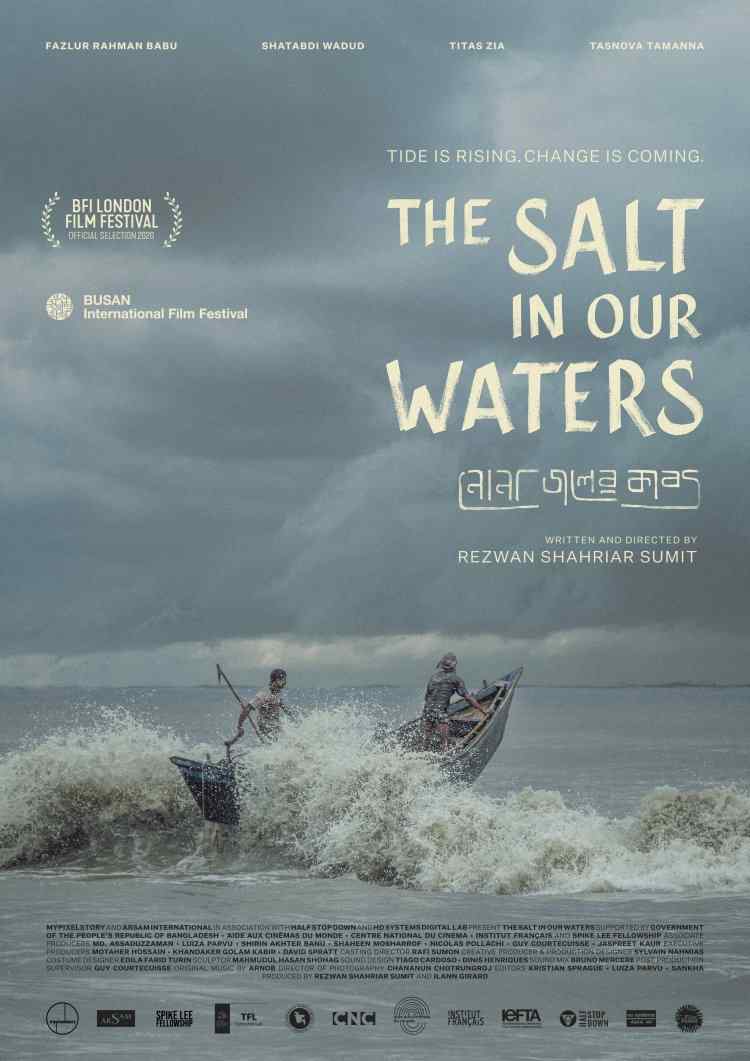
Image: film poster
***
About the author: Dr. Shoma A.chatterji is an veteran Indian film scholar and author based in Kolkata
What's Your Reaction?




































